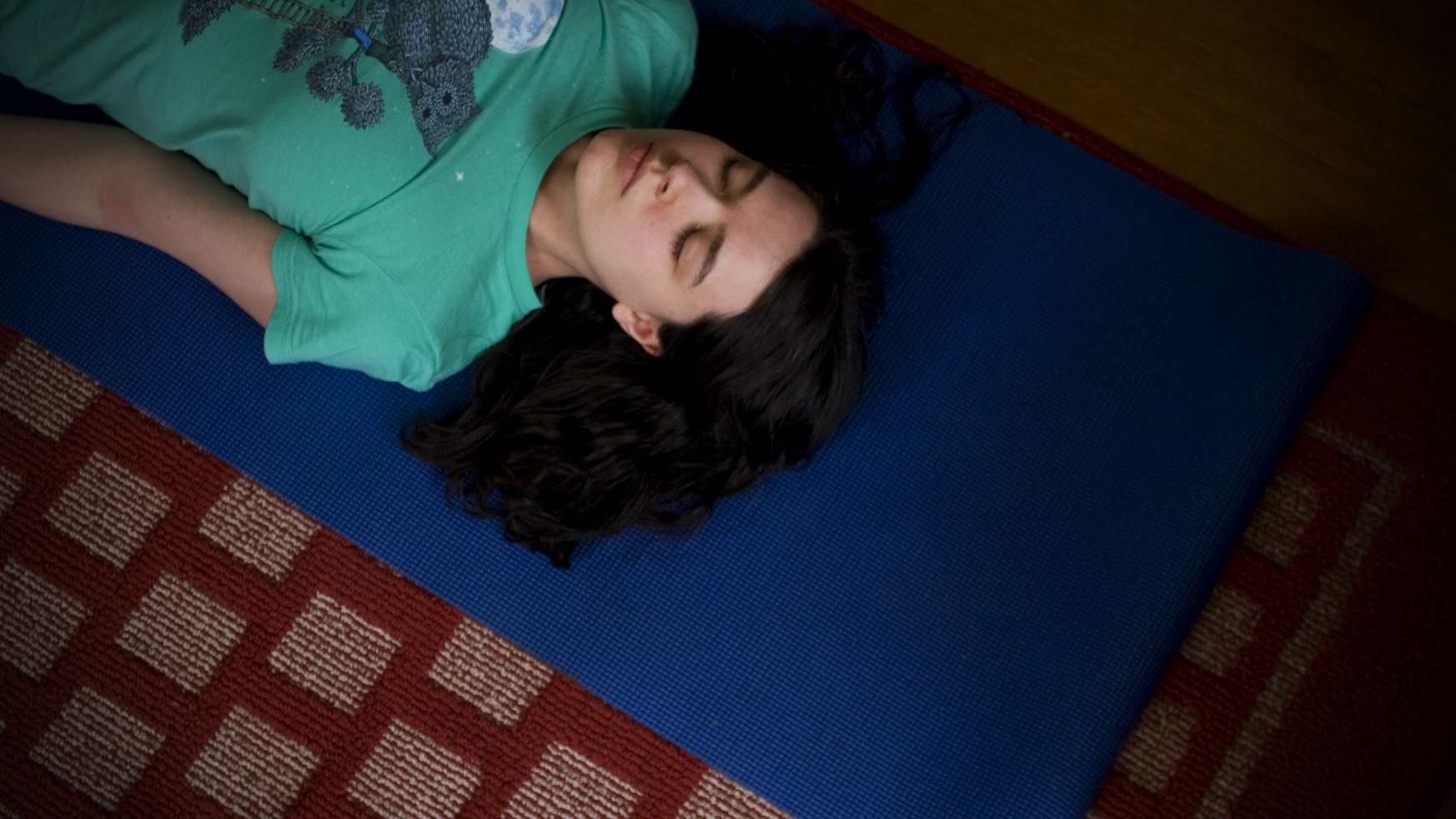Depending upon our flexibility, there are many yoga asanas which we may consider to be beyond our capability, such as the sitting position of Full Lotus or the flexibility and strength required for the posture of Pincha Mayurasana—Forward Stand.
Outside of yoga class, if I asked where people experienced their current greatest life challenge, they might respond, “finding time to relax”, “sleeping through the night”, “handling all my responsibilities” or “letting go.”
According to the National Sleep Foundation, National Department of Transportation, and Centers for Disease Control and Prevention, over 40 million people suffer from insomnia. Many more have lost the art of how to truly rest.
For some people it takes great effort to resist turning on the television. Once it’s on, it can become even harder to turn off. We are often mesmerized and trapped by its constant promises of happiness and freedom while time drains away from other more nourishing pursuits.
In this day and age of over-exertion, over-extension, over-stimulation via caffeine or media sensationalism, excessive noise and shallow breathing, true relaxation has been pushed aside. Replaced by activity and consumed by the effort, we often think ourselves lazy if we aren’t busy.
In a state of busyness the ability to be fully present often becomes lost in forward moving, frenetic activity. Wisdom becomes drowned out by automatic responses that left unchecked encourage a frenzied life.
Yoga Nidra is the perfect antidote to these stresses of the day and the current cultural norm. Part Shavasana (corpse pose for deep rejuvenation), part Pratyahara (the ability to quiet the mind beyond associations, opinions, habitual ways of processing information and cultural programming), part Pratipaksha Bhavana (intentionally replacing one thought with another), part surrender, part deep breathing, part focusing the mind and part deep relaxation, it is a beautiful synthesis of yogic techniques.
As your mind adjusts to settling into Yoga Nidra, the body is reminded how to lean in and restore while internal organs begin to unwind. Blood pressure regulates, accumulated stress begins to dissipate, adrenal glands are soothed and breathing slows and deepens. Our body’s natural healing powers are given space and allowed to rise while surrendering into deep peace.
Yoga Nidra is the ultimate power nap and deliberate “time-out.” Just 35 minutes of intentional Yoga Nidra practice is equivalent to the refreshing rejuvenation found in four hours of deep sleep.
The state of consciousness that is cultivated in Yoga Nidra is called Turiya; ‘sleepless sleep.’ It is often described as hovering between wakefulness and sleep. In Turiya, you are fully conscious, completely still and deeply relaxed.
If you have fallen asleep in Yoga Nidra, as so many people new to this practice do, the subtle and nuanced state of Turiya has shifted and been replaced by a denser form of consciousness called sleep. With practice though, Turiya is blissfully experienced for longer and longer stretches of time.
Students who practice nourishing the state of Turiya in Yoga Nidra begin to relish the cumulative benefits of this restorative experience. As their awareness develops, they notice that their bodies relax and their minds shift into stillness. It becomes calmer and they learn to observe thoughts while understanding the interconnectedness between body, breath and mind.
Other areas of their lives are elevated as well. They discover that their sleep is richer, accessing compassion is easier and their capacity for kindness expands. With deeper awareness, wisdom is now at center stage and they begin to see things more clearly without the veils of clouded thought and habitual patterns of viewing.
Additionally, Yoga Nidra has often been called a “karma buster.” Part of the karmic experience involves how we respond to situations. With a calmer body and mind, we respond to things from a conscious awareness rather than an unconscious ignorance.
In more progressive states of Yoga Nidra, we can learn how to utilize a sankalpa (an intentional thought) to move past destructive behavior into a more inspired and easeful life.
Yoga Nidra is one of the best ways to exert some control in a world where very little is up to us.
Even the word, “control” is used lightly here. For instance, in Patanajali’s Yoga Sutras, the word ‘control’ means not suppressing or forcing but simply ‘managing’ with awareness.
The practice of Yoga Nidra helps remind us that we are, among other things, dynamic beings capable of much more than our limited thoughts teach.
Successfully practiced, Yoga Nidra trains us to calm the mind, teaches us how to let go rather than hold on, calms anxious energy, diminishes depression, increases access to our inner wisdom and aids in our meditation. It is a very subtle and profound practice which yields the abundant fruit of awareness.
“Thoughts can create such a barrier that even if you are standing before a beautiful flower, you will not be able to see it. Your eyes are covered with layers of thought. To experience the beauty of the flower you have to be in a state of meditation, not in a state of ‘mentation’. You have to be silent, utterly silent, not even a flicker of thought—and the beauty expands, reaches to you from all directions. You are drowned in the beauty of a sunrise, of a starry night, of beautiful trees.” —Yogic Wisdom
Om Shanti, Shanti, Shanti.
To attend the next Yoga Nidra Weekend Workshop with Stacy Kamala Waltman, please visit Yogaville.
Love elephant and want to go steady?
Sign up for our (curated) daily and weekly newsletters!
Apprentice Editor: Karissa Kneeland / Editor: Renée Picard
Photo: flickr











Read 24 comments and reply